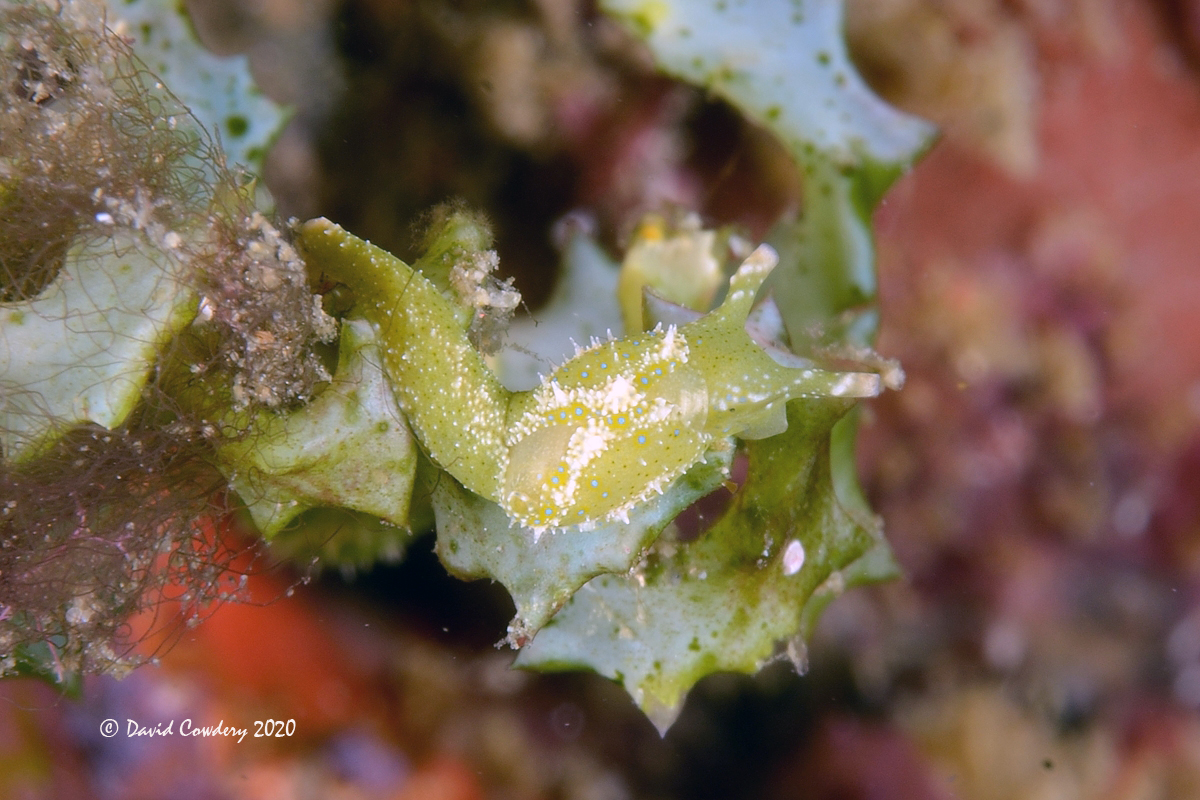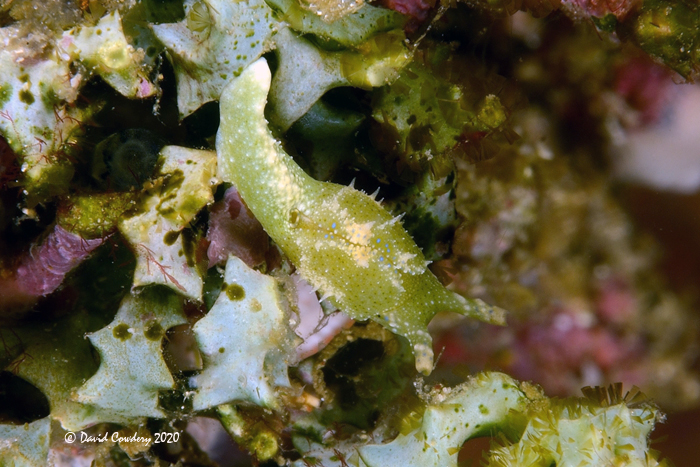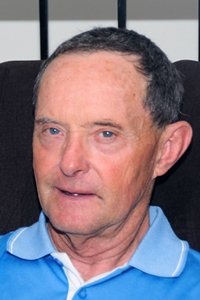 |
Image courtesy of David Cowdery
Kirby's Rock, Anilao, Philippines
Image courtesy of Dave Cowdery |
Oxynoe sp. 2 (undescribed) Well this week we are doing a three-peat - another Oxynoe from the Indo-Pacific. I hope this isn't like three strikes and you are out. This is another one of those Solar Sea Slugs, cultivating chloroplasts in its mantle tissue, gotten from the algae, in this case, Caulerpa, it feeds on. Smart slug - it gets nourishment both from eating the algae, and from the byproducts of photosynthesis (sugars and oxygen) carried on by the in-situ chloroplasts. Like its classmates it can also autotomize its tail to confuse and escape from predators. No worry, the tail quickly regenerates. Some of these Oxynoe are a little hard to distinguish. David's specimen here is lighter in color than the photo in NSSI 2nd edition, on page 399. It looks a little like Oxynoe antillarum from the Caribbean. The entire body is covered with tapering whitish-yellow papillae tipped in blue. Scattered over the body are yellow spots with blue centers. Not visible in David's photo are a series of these spots along the margin of the foot. The rolled rhinophores have a whitish-yellow band. Hopefully the Krug lab will put a name on this relatively common species soon. Dave Behrens Sammamish, WA 98074 Nov., 2020 Send Dave email at davidwbehrens@gmail.com |

Dave Cowdery is a retired bio-medical Engineer and is the inventor of the Alumina/Titanium hermetic feedthrough (1970) for implantable bionics and the first to introduce a Titanium casing. This invention created the first bionic implant (pacemaker) with a service life that could be measured in years rather than months and is the basis for todays huge multi billion dollar bionic industry. David is a Divemaster with over 5,500 dives experience and is based near Byron Bay in Australia. David is also a keen competitive road bicycle rider covering over 400 km most weeks. Photographic equipment used Nikon D800 camera with DS160 substrobes.
Send Dave mail at divec@ozemail.com.au
|

Attention all you Sluggers, and you know who you are! The NSSI 2nd edition is now available in ebook PDF and book form . The hard back version will become available Nov. 1st. Both will cost $65 (individually). You will need to jump through a few hoops to get the electronic version as pdf distribution is protected by Adobe ID!! Please read the following to enable reading your electronic purchase! This new 2nd Edition is updated and reorganized, including 185 new species. Among other features, the new edition includes additional photographs of species, an identification key, and an up-to-date classification reflecting the latest evolutionary relationships. The Indo-Pacific represents the largest expanse of tropical ocean in the world, stretching from the Indian Ocean coast of southern Africa and the Red Sea to the central Pacific of the Hawaiian Islands, Easter Island and the Marquesas. This region supports the most diverse marine fauna of any place in the world for most groups of marine organisms. The nudibranchs and sea slugs are no exception to this rule; there are about 3,000 described species of these organisms in the world and at least 40% of these have been found exclusively in the Indo-Pacific tropics. This book illustrates 2,138 Indo-Pacific nudibranchs and sea slugs, including many undescribed species.
|

|
